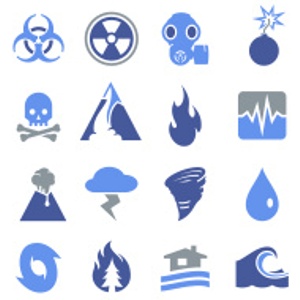Millions of travelers find themselves thousands of miles from home each day. Some travel for business and some for pleasure. How many make contingency plans for getting home in the event of a national emergency? The SHTF Scenario: The Get Home Plan is something that every family should have in the event of a local or widespread disaster.
The state of the world today
Concern is growing for the safety of public places. Terrorists have declared war across the globe. While most of the attacks center on smaller venues, let’s not forget what happened on 9/11.
There is no way to tell when disaster will strike, or how large scale the emergency will be.
Other types of emergencies
Mother nature has thrown a lot of nasty weather at the earth in the last few decades. Earthquakes, tsunami, flooding, ice storms, hurricanes and the list goes on.
It pays to be aware of the regional hazards in the areas you are traveling. Plan in advance so you’ll be prepared for whatever may come.
The effects of disaster
Regardless of the size of a disaster, there is always the potential for local or more widespread shutdowns of communications and transportation. The point is that you could be caught away from home with few options for public transportation. You will need to have a contingency plan in place for getting home.
SHTF Scenario: Prepper Escape Plan
You can never be too prepared in this day and age. Making an escape plan may save your life. It doesn’t take long to think ahead and plan for the worst. Put together a basic survival kit, a meeting place for yourself and your family or friends and establish the necessary bug out routes, depending on where you are at when it happens.
Survival escape routes
When choosing the most effective escape routes, take into consideration that the major thoroughfares are likely to be clogged with traffic. Find alternate routes that are less likely to have traffic jams and long lines of vehicles. In addition, if there has been a natural disaster, such as flooding, earthquake or tsunami, have an alternate route in your plan that bypasses areas which are the most likely to be affected.
Plan for the type of trip
Most business travelers pack light and only take the items needed for the trip. A small and lightweight survival kit can make all of the difference in an emergency.
If you are flying, consider what you would do if your plane ditched and you were out in the middle of nowhere? There is always room to pack a few of the essentials so you’ll be ready for anything.
You should always include additional prepper gear that you would typically carry in a bug out bag. The items often found in bug out bags tend to be lightweight, compact and be multi-functional. I provide a link for those needing further information on bug out bag gear.
Many of these prepper products are so small and safe to carry on your person or to stow away in your luggage or travel bag. Food like protein bars and a few extra small water bottles should provide you with enough sustenance to get you through a short term crisis. You should pack enough to last you at least three days.
Vacation trips 
People on vacation may face different situations than those on business. You may be in a highly populated metropolitan area, or it may be an out of the way place, far away from civilization.
Regardless of the area or who is around, you will still need to have a survival escape plan that includes an alternate way to get back home. There are times when you can depend upon others for help, and times when it is everyone for themselves.
Research your travel route and destination
Emergencies can occur any where and at any time. Take a little time to find out the particulars about your destination as well as the travel route that you will be taking there and back. When you know what type of road systems, landmarks and geographical country awaits you will have a better idea of what you could potentially need to have along with you to survive.
Whenever possible, pre-plan your destination using a map. It is always best to have a hard copy with you just in case electronics do not work in the potential crisis situation. Using the internet, search for nearest hospitals, walk-in clinics, consulates, and other emergency type facilities closest to your lodging destination.
Also important is to identify and mark on your map primary and secondary highway escape routes from your location. You most likely will want to set a course to get home or to your pre-arranged bug out location. If you are traveling internationally, if you have relatives or distant family members this might be your most logically place to go. If not plan your course for the nearest embassy or consulate.
Plan for the number of people in your party
You may be traveling alone, which can simplify your get home plan. If there will be others with you, perhaps friends, family or business associates, you should accommodate the potential for needing to assist them as well. This becomes particularly important when it comes to food, water and travel.
Planning for the essentials of survival
You can make your survival kit in any size and weight. Some things to consider in planning for the contents are for basic items for food, shelter and clothing. Beyond that, take into account the geographical area, climate and weather of the area you will be traveling. Prepare as though you were going to be exposed to the elements and on your own. What would you consider to be the most important items to take along?
Plan for how you will eat
In a survival situation, it is always best to have food items which are compact and high in nutrients. Nutritional bars that are packed with protein, carbohydrates and other ingredients for energy renewal are the best. They are small in size and can give you a quick boost of strength when there is nothing else available.
If you are traveling by car, pack extra potable water, non-perishable nutritious food items, extra clothing, blankets and comfortable shoes in case you have to walk long distances. A backpack may also come in handy if you have to leave the vehicle to get home.
Communication
In large scale emergencies you cannot always depend on access to landlines, television or internet services. You should always have your cell phone available on a full charge with an extra charged battery. A small portable battery operated radio can give you access to any outside news if there is a power outage. This can help to keep you posted on any changes in your chosen travel route.
Lasting Thoughts
There are many different types of disasters that can happen at any time and in any place. The odds are against being caught away from home in an emergency, but the truth of the matter is that it could happen to you.
With a little advanced thought and planning, you can safeguard yourself against this by putting together an emergency escape plan and alternate travel routes.
Alternate travel routes can help you to more quickly and easily make it back to your home. Sharing this plan with your friends and family can aid in reuniting every member in the safety of their own homes. You may never need to use survival escape routes, but the world is in such tremendous chaos that there are people who will, and you never know when it will be you.


